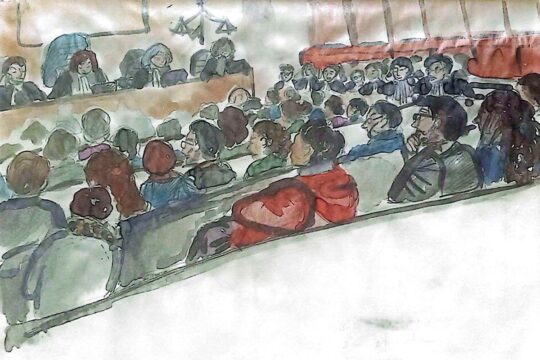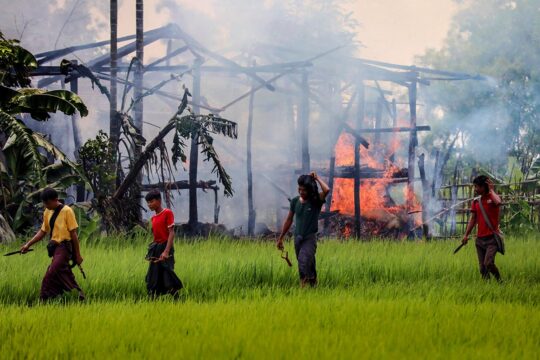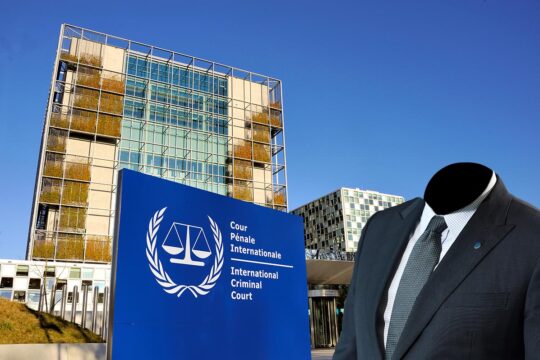United Nations war crimes investigators said Wednesday they have evidence showing the Syrian regime carried out an April sarin gas attack in Idlib province that killed dozens of people.
The attack was the latest in a string of chemical strikes since the Syrian conflict began in March 2011.
Here is a recap.
- Damascus threatens to use chemical weapons -
July 23, 2012: The Syrian government acknowledges for the first time that it has chemical weapons and threatens to use them in the event of military operations by Western countries, but not against its own population.
The following month, then US president Barack Obama says the use or even movement of such weapons would be a "red line" for his administration.
- Sarin gas attack near Damascus -
August 21, 2013: Hundreds of people are killed in the east and southwest of Damascus, including in Moadamiyet al-Sham, in chemical weapons strikes after Syrian troops launch an offensive in the area.
The opposition blames the regime, which denies the charge.
In late August, a US intelligence report says with "high confidence" that Syria's government carried out the attack. It says 1,429 people were killed, including 426 children.
September 14, 2013: The United States and Russia reach a deal to eliminate Syria's chemical weapons by the middle of 2014, averting punitive US strikes against the regime of President Bashar al-Assad.
Two days later, a UN report says there is clear evidence sarin gas was used in the August 21 attack.
- Chlorine attacks -
September 10, 2014: The Organisation for the Prohibition of Chemical Weapons (OPCW) says chlorine was used as a weapon "systematically and repeatedly" on villages in northwestern Syria's Idlib province earlier in the year.
Human Rights Watch blames Syrian government forces for attacks there.
In 2016, a UN commission finds helicopters from two regime-controlled air bases dropped chlorine barrel-bombs on the villages of Qmenas, Talmenes and Sarmin, in rebel-held Idlib province, in 2014 and 2015.
August 7, 2015: The UN Security Council agrees to form a panel of experts to investigate chlorine attacks in Syria.
Washington, London and Paris blame the Syrian regime, but Moscow says there is no irrefutable evidence proving the claim.
In late August, a UN commission accuses Syrian authorities of using chemical weapons, probably chlorine, eight times in the west of the country.
- IS accused of mustard gas attacks -
August 25, 2015: Syrian rebels and activists say they documented a chemical weapons attack on August 21 in the rebel stronghold of Marea in northern Aleppo, affecting dozens of people.
Locals and the Britain-based Observatory accuse the Islamic State group of being behind the attack.
Doctors Without Borders (MSF) says it treated four civilians at a nearby field clinic for "symptoms of exposure to chemical agents".
Patients at an MSF hospital in Aleppo say a mortar round hit their house and "after the explosion, a yellow gas filled the living room".
A 2016 UN investigation blames IS for the attack, saying it was "the only entity with the ability, capability, motive and the means to use sulphur mustard".
- New suspicions -
August 2, 2016: The Observatory reports 24 cases of suffocation in Saraqeb, a rebel-held town near Aleppo.
October 21, 2016: The UN-led Joint Investigative Mechanism says that of nine alleged chemical attacks it is examining, three can be attributed to the Syrian government and one to IS jihadists.
Regime backer Russia later dismisses the findings as "unconvincing".
- Russian-Chinese veto -
February 28, 2017: Russia and China block a Western-backed UN resolution that would have imposed fresh sanctions on Damascus over chemical weapons use.
March 3, 2017: The OPCW says it is examining allegations of eight toxic gas attacks in Syria since the beginning of the year.
- Khan Sheikhun attack -
April 4, 2017: Warplanes strike the rebel-held town of Khan Sheikhun in the northwestern province of Idlib with a chemical agent, killing at least 83 people. The OPCW later says sarin gas was used.
Overnight April 6-7, 2017: The United States fires 59 Tomahawk missiles at a Syrian airbase from which it says the attack was launched.





